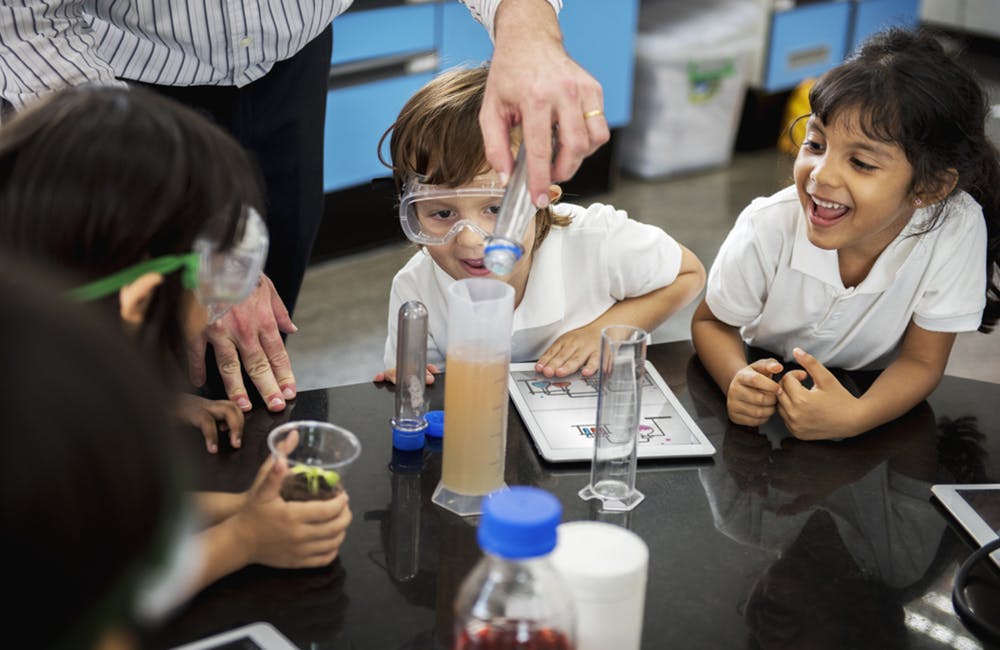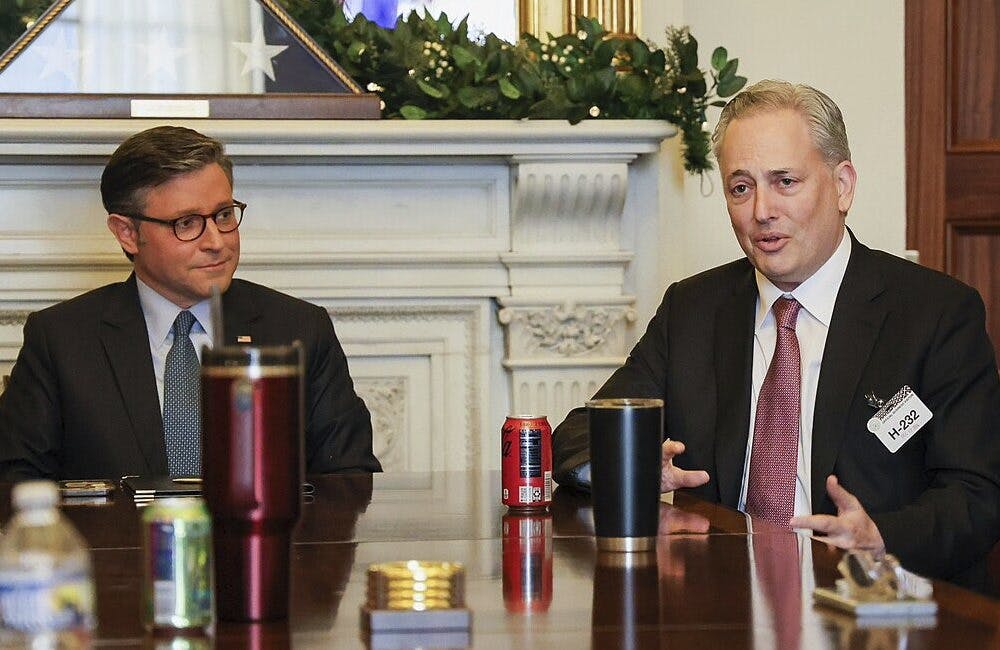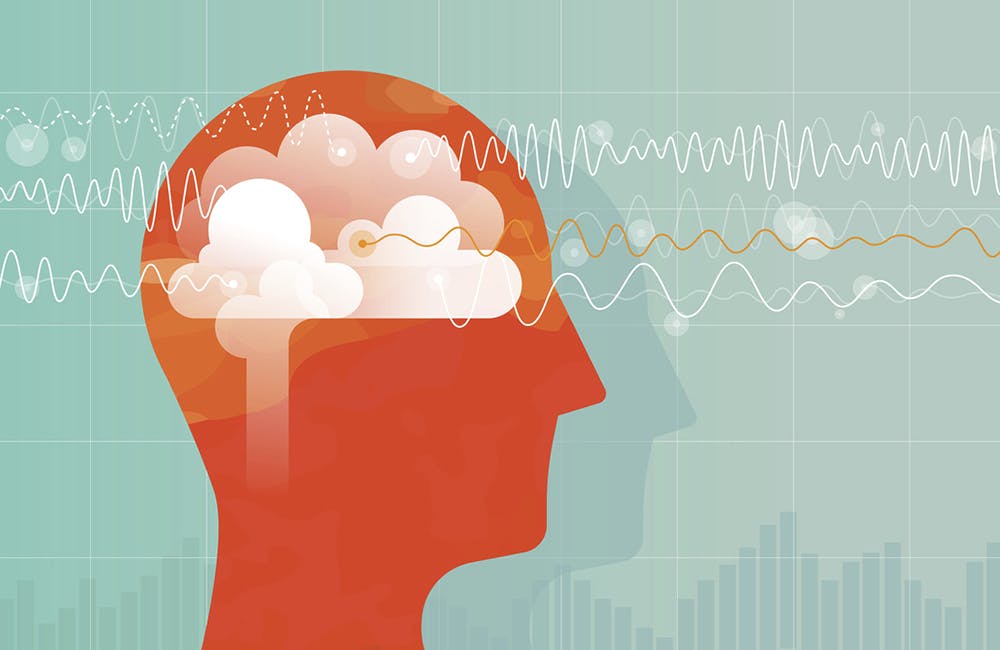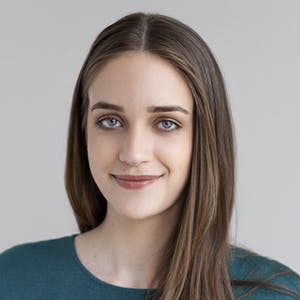How NSF is Nurturing the ‘STEM Spark’ to Democratize Science
The foundation’s new Technology, Innovation, and Partnerships Directorate is investing in innovation across America.

When it comes to fostering the next generation of scientists, National Science Foundation Director (NSF) Sethuraman Panchanathan says it all begins with a ‘STEM spark’ moment.
“My STEM spark moment was when the Apollo landed on the moon,” he said at the MerITocracy summit last Thursday. “Every kid has carved that STEM spark that needs to be ignited. How do you do that? You do that because you have fantastic teachers who are inspiring.”
Whether or not a child ends up pursuing a career in science, Panchanathan wants everyone to experience a moment of scientific excitement.
“For me, I fundamentally believe that talent and ideas are democratized. It’s everywhere,” he said. “If that is the case, then what we need to do is to unleash the talent. How do we inspire, motivate, nurture and bring to life all of the talent that we have here? One of the things that NSF is intensely focused on — and this is a central pillar of our mission — is ensuring accessibility and inclusivity. It’s a missed opportunity if we don’t take full advantage of all the domestic talent, and then add and welcome global talent like no tomorrow so that the full force of the domestic talent and the full force of the global talent are being put together — because this is the place of innovation.”
To further democratize scientific funding across America, NSF launched its first new directorate in 31 years and established the Directorate of Technology, Innovation and Partnerships (TIP). The goal is for agencies, industry, venture capital and other partners to work together to invest in innovation.
“The principal objective is: If innovation can be anywhere, and opportunity should be everywhere, then what we need is to ensure that this Technology Innovation Partnership is making possible innovation opportunities everywhere,” Panchanathan said. “And how do we do that? We do that by partnering with venture capital systems and by taking on problems that are more akin to the place. I call it place-place innovation. Where else can you have the best future of agriculture work than the states of Nebraska, Kansas, Iowa, Indiana, Illinois?”
The key to unlocking scientific talent, however, starts with that initial STEM spark, Panchanathan emphasized.
“I, as a scientist myself, feel that we don’t do a good enough job of being able to communicate and relate to the public,” he said. “This morning, you all woke up and the first thing you probably did was to check the weather on your phone. Now, if you go back and start looking at that step by step, every aspect of it was made possible by unbelievable scientific discoveries, innovations, implementations, technology and outcomes. Likewise, I drove here, I used my GPS, as we all do. This cellular device has 10s of 1000s of projects of NSF. This doesn’t happen magically. I think for us to be able to not be elitist, but to actually relate to what science and technology is making happen. Because people experience that every day. I cross the bridge, and I’m glad I didn’t fall — it’s because of fantastic engineering, right? I think the fact is that we are not talking about it enough. Once you do that, then you build more excitement. That engagement breeds trust, trust then brings more of these questions being asked. This is the process.”
This is a carousel with manually rotating slides. Use Next and Previous buttons to navigate or jump to a slide with the slide dots
-

Data Transparency Essential to Government Reform, Rep. Sessions Says
Co-Chair of the Congressional DOGE Caucus Rep. Pete Sessions calls for data sharing and partnerships to reduce waste and improve efficiency.
5m read -

DOD Turns to Skills-Based Hiring to Build Next-Gen Cyber Workforce
Mark Gorak discusses DOD’s efforts to build a diverse cyber workforce, including skills-based hiring and partnerships with over 480 schools.
20m listen -

Trump Executive Order Boosts HBCUs Role in Building Federal Tech Workforce
The executive order empowers HBCUs to develop tech talent pipelines and expand access to federal workforce opportunities.
3m read -

Tracking CIOs in Trump's Second Term
Stay informed on the latest shifts in federal technology leadership as new CIOs are appointed and President Trump's second term takes shape.
6m read -

DOL Turns to Workforce Development to Maintain AI Superiority
DOL is bridging the AI skills gap through partnerships and upskilling to ensure future AI workforce readiness.
10m watch -

Trump’s Executive Order Spurs Federal Push for AI Literacy
Agencies are ramping up AI literacy efforts across the federal workforce and education systems after Trump's executive order on AI education.
5m read -

White House AI Czar Outlines Industry's Role in Global AI Race
White House AI Czar David Sacks detailed the Trump administration's AI priorities and industry's role in growing the nation's AI economy.
3m read -

CIA's Future Relies on Human-AI Collaboration, CAIO Says
From data triage to agentic AI, Lakshmi Raman details how human expertise remains paramount for national security applications.
3m read -

Opinion: AI Is Reshaping Government, Can Contractors Keep Up?
To compete in the new AI-driven public sector, contractors must demonstrate the one thing machines can’t deliver: human originality.
4m read -

AI Growing in Focus Amid HHS Restructure
Department of Health and Human Services officials see promise in artificial intelligence amid efficiency goals.
4m read -

Rep. Gerry Connolly Leaves Lasting Mark on Federal Tech
Connolly's leadership in Congress significantly advanced government IT, emphasizing accountability, efficiency and a robust cybersecurity posture.
4m read -

Agencies Use AI to Boost Efficiency, Cybersecurity Under White House Mandates
DLA and GAO are investigating how AI can boost efficiency and bolster cybersecurity as agencies align with the president's tech directives.
3m read
















